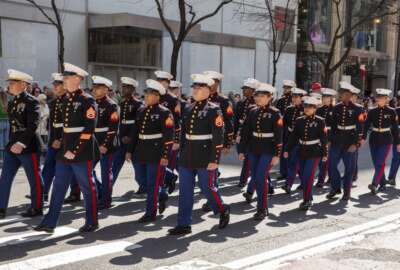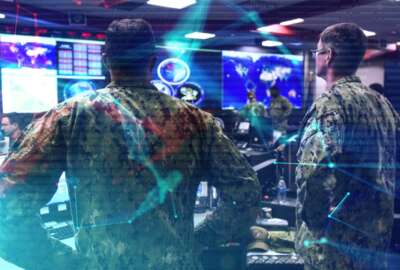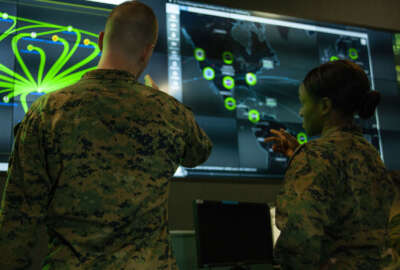Marine Corps on track with Force Design, but funding could delay some efforts
"With a continually delayed budget, we’re losing years on Force Design,” said Marine Corps Commandant Gen. Eric Smith.
The Marine Corps is still on track with its Force Design 2030, which is now simply known as Force Design, but budget uncertainty could affect the service’s ability to meet the initiative’s critical milestones.
“The challenges are going to be funding. With a continually delayed budget, we’re losing years on Force Design,” Marine Corps Commandant Gen. Eric Smith told reporters Wednesday at the Defense Writers Group event.
“Whenever we have continued resolutions, we are capped at the previous year’s spending numbers, and that doesn’t get you ahead of the pacing threat.”
While the service didn’t release a public Force Design update for 2024 as it had in previous years, Smith told reporters the Corps is in the process of standing up the Marine Littoral Regiments — specialized units within the Marine Corps that are designed to operate in contested coastal areas. These units are central to the Force Design initiative and the service’s answer to the challenges of operating in the Indo-Pacific region.
The service has already established two key MLRs, one out of Hawaii and one out of Okinawa, Japan.
“We’re constantly looking to determine how many of them we need, how many of them and where they’ll be positioned,” said Smith.
“We’re constantly looking at adjusting the MLRs and making sure that they are designed or that they’re executing what we designed them to do, which is to be low signature, highly mobile, aggregatable, long-range, precision strike regimes that have the ability to sense, make sense and take action before action needs to be taken.”
Force Design, kicked off in 2020 by then-Commandant Gen. David Berger, is the service’s ambitious initiative to transform the Marine Corps from a force optimized to fight the Global War on Terror into a lighter, more agile, and technology-driven force designed to operate in more contested environments, specifically in the Indo-Pacific region.
The initiative has since faced some criticism from retired senior Marine Corps officers and former officials, who argued that Force Design would make the Marines a less effective combined arms force and that the initiative doesn’t address logistics support, with the Corps relying on the Navy for logistics.
“What I would say is, bring me a better solution,” said Smith. “We are going to be in the first island chain, we are going to be dependent upon the Navy, as we have always been dependent upon the Navy since our founding.”
“Just as we were in World War II, just as we were in Desert Shield and Desert Storm. We are dependent upon the Navy, but it’s not us versus them. And the Navy is fully committed. Adm. [Lisa] Franchetti and I have locked shields. We are fully committed to ensuring that the Marine Corps has the logistical resources that it needs to be able to fight in the first island chain.”
While the Corps relies significantly on the Navy for logistics, the Corps still needs to address some of its logistical challenges, said Smith.
“We have to do some of that ourselves. We have to use prepositioning, stocks, additive manufacturing, and 3D printing. You got to do a little bit of creative thinking. That’s what we’re trying to do, and that’s what Force Design was all about,” said Smith.
Copyright © 2025 Federal News Network. All rights reserved. This website is not intended for users located within the European Economic Area.







